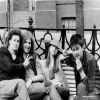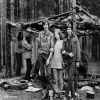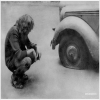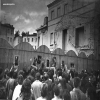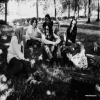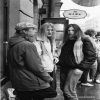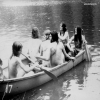

Hippy
|
The movement based on melomaniac taste for psychedelic and hard-rock, that generated the all-USSR system of lodgings, forest and beach camps, home concerts and hitchhiking, saw its rise in the mid 70-s. By the early 80-s the hippies took over the capitals: in Moscow hippie-communication covered the Boulevard Ring, Arbat and Mayakovsky Square. Beatleman-students, street singers and children of the Soviet “intelligentsia”, who represented the non-official art, joined the movement ranks. By the mid 80-s the movement , that was partly copying the behavior of its politicized foreign age mates, deteriorated despite traditional trips to the Baltics, Crimea and Buryatia that lasted until the end of the decade. Not able to withstand the social pressing on the streets and the competition of new trends, the new generation of hippies joined the ranks of non-conformist artists and musicians, partly integrated the movement of metalheads, post-punks. And devotees of the old system, who dissociated themselves from this event, chose to be labeled as “the hairies” or “ippie-indians”, remained on the streets and partly joined the ranks of rastamen and bikers.
 go back to "Street Styles" go back to "Street Styles" |

